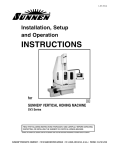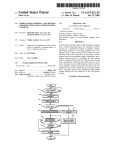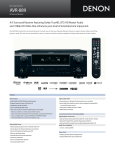Download Imaging apparatus
Transcript
US 20110310285A1 (19) United States (12) Patent Application Publication (10) Pub. N0.: US 2011/0310285 A1 (43) Pub. Date: NAKAI (54) IMAGING APPARATUS (52) (75) Inventor: YASUNORI NAKAI, Nara (JP) (73) Assignee: PANASONIC CORPORATION, (21) App1.No.: (22) Flled: 13/161,590 imaging unit and to be capable of taking a reference position , , , , second display unit con?gured to display the image data _ (JP) ............................... .. 2010 138854 _ _ _ Int. Cl. H04N 5/222 generated by the imaging unit, and a controller con?gured to perform control, When the position sensor senses that the ?rst display unit is not at the reference position, to activate the proximity sensor, and to operate the ?rst display unit When the Pubhcatlon Classl?catlon (51) An imaging apparatus includes an imaging unit con?gured to capture a subject image to generate image data, a ?rst display and a position different from the reference position, a prox imity sensor con?gured to sense proximity of an object to the ?rst display unit, a position sensor con?gured to sense Whether the ?rst display unit is at the reference position, a Forelgn Apphcatlon Prmnty Data _ ABSTRACT unit con?gured to display the image data generated by the Jun‘ 16’ 2011 Jun. 18, 2010 us. c1. .......................... .. 34s/333.06; 348/E05.024 Osaka (JP) , (30) (57) Dec. 22, 2011 proximity sensor senses proximity of an object, and to operate the second display unit When the proximity sensor does not sense proximity of an object. (2006.01) 356 340 ,/ 31 0 / 25 i / 252 / 230 Patent Application Publication Dec. 22, 2011 Sheet 1 0f 7 EN Q2\ .\ L D CC KOCZE 8w8m SN2m/ Emosgz wA.- US 2011/0310285 A1 / .l ?I0%Egmzvo h 05 2'> gm +0653\i \€\\\ EoHz=9m2zo. \ \ _ / \ _ / \ LUBE_E /“Uzi/EO .3 F \QE9a:ANE Patent Application Publication Dec. 22, 2011 Sheet 2 0f 7 US 2011/0310285 A1 251/ 250 350 / 340 Fig. 3\0_ 230 Patent Application Publication Dec. 22, 2011 Sheet 3 0f 7 US 2011/0310285 A1 Fig. 3A SETTING MENU 0 CLOCK v. C‘? EXTERNAL MICROPHONE: OFF BEEP SOUND ; OFF MY IE SELECT <3 DETERMINE % Fig. 3B SETTING MENU CLCCK '‘ EXTERNAL MICROPHONE : OFF Ci BEEP SOUND -. QFF 5: AUTOMATIC DISPLAY El MONITOR SWITCHING : SELEGTQ» K20 T’ ON DETERMINE % Patent Application Publication Dec. 22, 2011 Sheet 4 0f 7 US 2011/0310285 A1 300 320 \Z 330 MONITOR 4 -------------- H 200 \ j l I l J \\ 340 330 Patent Application Publication Dec. 22, 2011 Sheet 5 0f 7 US 2011/0310285 A1 Fi. 5 /' CONNECTION OF EXTERNAL VIEWFINDER ' S301 IS THERE EYE PROXIMITY SENSOR’? YES ,. - I - SETTING ITEM OF “AUTOMATIC DISELAY MONITOR $302 SWITCHING" IS ADDED TC SETTING MENU SETTING ITEM OF “AUTOMATIC DISPLAY MONITOR SWITCHING” IS SET “CN” BY DEFAULT -AUTOMATIC SWITCHING FLAG IS SET S303 MANUAL DISPLAY MONITOR SWITCHING FUNCTION IS ASSIGNED TO PREDETERMINED FUNCTION BUTTON“ Patent Application Publication Dec. 22, 2011 Sheet 6 0f 7 O>F<|§EMwD5 E02O5Z. US 2011/0310285 A1 .ZOOi“.Hmwmm Patent Application Publication Dec. 22, 2011 Sheet 7 0f 7 US 2011/0310285 A1 Fig. 7 ( DISPLAY SWITCHING OF ) MONITOR J'AUTOMATIC SW. " "MANUAL SW." CURRENT DISPLAY MONITOR? 5402 " EXTERNAL VIEWFINDER " REAR MONITOR $403 8404 v DISPLAY MONITOR DISPLAY MONITOR FLAG : ON FLAG = OFF '4 S405 I "VARI-ANOLE STATE" CHECK STATE OF EXTERNAL VIEWFINDE S406 8409 “CLOSED STATE" v AUTOMATIC DISPLAY MONITOR AUTOMATIC DISPLAY MONITOR SWITCHING FUNCTION : ACTIVE SWITCHING FUNCTION ; INAOTIvE (EYE PROXIMITY SENSING (EYE PROXIMITY SENSING OPERATION FLAG = ON) OPERATION FLAG I OFF) i S407 "EXTERNAL VIEWFINDER" CHECK USER SETTING "'REAR MONITO R’I 8408 DISPLAY IMAOE DATA ‘ ON REAR MONITOR ‘ NO S41. 1 S410 m E} nap! SENSED7> PROXIMITY YES DISPLAY IMAGE DATA ON EXTERNAL VIEWFINDER US 2011/0310285 A1 IMAGING APPARATUS BACKGROUND [0001] 1. Technical Field [0002] The technical ?eld relates to an imaging apparatus having a plurality of display units including a movable dis play unit. [0003] 2. RelatedArt [0004] JP10-004509A discloses an imaging apparatus including tWo types of display units, a vieW?nder and a moni tor. The imaging apparatus includes an eye proximity sensor. When the proximity of the user’s eye to the vieW?nder is sensed by the eye proximity sensor, the monitor display is turned off. When the eye proximity is not sensed, the vieW ?nder display is turned off. By this control, an imaging appa ratus Which is easy to operate and capable of reducing Wasted poWer consumption is implemented. [0005] In the imaging apparatus disclosed in the above described JP10-004509A, When the display sWitching Dec. 22, 2011 the ?rst display unit; and a controller con?gured to control the ?rst and second display units. In a case Where the position determining unit determines that the ?rst display unit is not positioned at the reference position, the controller performs control to operate the ?rst display unit When the proximity determining unit determines that the object is in proximity to the ?rst display unit, and to operate the second display unit When the proximity determining unit does not determine that the object is in proximity to the ?rst display unit. [0009] According to the imaging apparatus of the above aspect, When the ?rst display unit (e.g., an external vieW ?nder) is moved from the reference position, the proximity sensor is forcibly activated, and When the proximity sensor senses the proximity of an object, the ?rst display unit is operated. By this, for example, even if the automatic sWitch ing function of the display unit is set to invalid, When the user rotates the ?rst display unit (e.g., an external vieW?nder) to use the ?rst display unit (the external vieW?nder), the auto matic sWitching function of the display unit becomes valid. betWeen the vieW?nder and the monitor is set to “manual Hence, the setting for changing the display unit Which is performed due to a change in user’s shooting style is facili sWitching” instead of “automatic sWitching” Which is per tated, improving the usability of the imaging apparatus. formed based on the detection result of the eye proximity sensor, and the setting is performed to turn off the vieW?nder display (turn on the monitor display), even if the user looks through the vieW?nder, nothing is displayed on the vieW ?nder. In such circumstances, When the user Wants to check a subject by looking through the vieW?nder, he/ she needs to take the trouble to perform an operation to turn on the vieW ?nder display. Thus, the operation becomes troublesome, causing a problem of poor usability. BRIEF DESCRIPTION OF DRAWINGS [0010] FIG. 1 is a block diagram shoWing an electrical con?guration of a camera system. [0011] FIG. 2 is a rear vieW of the camera system. [0012] FIG. 3A is a diagram for describing a setting menu and FIG. 3B is a diagram for describing a setting menu having the “automatic display monitor sWitching” item added thereto. SUMMARY [0013] FIG. 4A is a diagram for describing a closed state of an external vieW?nder and FIG. 4B is a diagram for describ [0006] An imaging apparatus capable of solving the above described problem is provided that has improved usability of sWitching betWeen a plurality of display units. ing a van-angle state of the external vieW?nder. [0014] FIG. 5 is a ?owchart for describing an operation performed When the external vieW?nder is connected to a [0007] camera body of the camera system according to a ?rst embodiment. [0015] FIG. 6 is a diagram shoWing an example of a mes sage displayed When the external vieW?nder is mounted on the camera body. [0016] FIG. 7 is a ?owchart for describing a display moni tor sWitching operation of the camera system according to the ?rst embodiment. In a ?rst aspect, an imaging apparatus includes: an imaging unit con?gured to capture a subject image to gener ate image data; a ?rst display unit con?gured to display the image data generated by the imaging unit and to be capable of being positioned at a reference position and a position differ ent from the reference position; a proximity sensor con?g ured to sense proximity of an object to the ?rst display unit; a position sensor con?gured to sense Whether the ?rst display unit is positioned at the reference position; a second display unit con?gured to display the image data generated by the imaging unit; and a controller con?gured to perform control such that, When the position sensor senses that the ?rst display unit is not positioned at the reference position, the controller activates the proximity sensor, and operates the ?rst display unit When the proximity sensor senses the object is proximate to the ?rst display unit, and operates the second display unit When the proximity sensor does not sense the object is proxi mate to the ?rst display unit. [0008] In a second aspect, an imaging apparatus to Which a ?rst display unit is mountable is provided. The ?rst display unit is a display unit con?gured to display captured image data and capable of being positioned at a reference position and a position different from the reference position. The imaging apparatus includes: a second display unit con?gured to display captured image data; a position determining unit con?gured to determine Whether the ?rst display unit is posi tioned at the reference position; a proximity determining unit con?gured to determine Whether the object is in proximity to DETAILED DESCRIPTION OF PREFERRED EMBODIMENTS 1. First Embodiment 1-1 . OvervieW [0017] A camera system according to the present embodi ment includes an interchangeable lens and a camera body. An external vieW?nder is mountable on the camera system through a connector. The camera body includes a rear liquid crystal monitor (hereinafter, referred to as a “rear monitor”) and a connector for connecting the external vieW?nder (here inafter, referred to as a “connector”). The external vieW?nder includes an eye proximity sensor, a liquid crystal display unit (hereinafter, referred to as a “?nder monitor”), and a detection sWitch that detects a state of the external vieW?nder. [0018] The folloWing embodiment describes a camera sys tem to Which an external vieW?nder is mounted, that is, a camera system including tWo display monitors (a rear moni US 2011/0310285 A1 Dec. 22, 2011 tor and an external view?nder), which further facilitates the [0029] setting performed due to a change in user’s shooting style, played on the rear monitor 230 and a user can set various thereby providing excellent usability. functions of the camera system 1 on the setting menu. The [0019] An embodiment in which the idea of the present application is applied to a lens-interchangeable camera sys tem will be described below using the drawings. setting menu has, for example, an item of “automatic display monitor switching” which is a setting for automatically In the camera system 1, a setting menu can be dis switching a display monitor based on the sensing result of an eye proximity sensor 310 (see FIG. 3B). 1-2. Con?guration [0030] When the “automatic display monitor switching” setting is turned on by the user on the setting menu, that is, [0020] FIG. 1 is a block diagram showing a con?guration of a camera system 1 according to a ?rst embodiment. FIG. 2 is a schematic diagram showing a rear view of the camera sys automatic switching is set, the microcomputer 220 sets the automatic switching ?ag 241 to “ON”. When the “automatic tem 1 according to the ?rst embodiment. The camera system 1 includes an interchangeable lens 100, a camera body 200, and an external view?nder 300. The interchangeable lens 100 has a Zoom lens and a focus lens (not shown) and guides light display monitor switching” setting is turned off by the user, that is, manual switching is set, the microcomputer 220 sets the automatic switching ?ag 241 to “OFF”. As such, the automatic switching ?ag 241 indicates the contents of the setting for automatic display monitor switching, which is set passing through the interchangeable lens 100 to the camera by the user on the setting menu. body 200. [0021] The camera body 200 includes a CCD image sensor 210, a microcomputer 220, a rear monitor 230, a DRAM 240, an operating member 250, a card slot 260, and a connector 270. [0022] In the camera system 1, the CCD image sensor 210 captures a subject image incident through the interchangeable lens 100, and converts the subject image into an electrical signal to generate image data. The microcomputer 220 per forms various image processing and compression processes on the generated image data and stores the processed image data in a memory card 400 . A detail of each component will be described below. [0023] The microcomputer 220 controls the overall opera tion of the camera system 1 according to an instruction from the operating member 250. For example, the microcomputer [0031] When the eye proximity sensing operation ?ag 242 is ON, the microcomputer 220 activates the eye proximity sensor 310. At this time, the microcomputer 220 performs switching of a display monitor to be operated based on the sensing result of the eye proximity sensor 310. When the eye proximity sensing operation ?ag 242 is OFF, the microcom puter 220 stops or inactivates the operation of the eye prox imity sensor 310. At this time, the microcomputer 220 deter mines a display monitor to be operated (a display monitor for displaying an image), based on the value of the display moni tor ?ag 243. [0032] The display monitor ?ag 243 takes the value “ON” when the display monitor to be operated is the rear monitor 230, and takes the value “OFF” when the display monitor to be operated is an external view?nder 300 (that is, a ?nder 220 performs various image processing including gamma monitor 320). The microcomputer 220 sets the eye proximity sensing operation ?ag 242 based on the connection state of correction, ?aw correction, white balance correction and the like, and compression processes including a JPEG compres the external view?nder 300, the state of the automatic switch ing ?ag 241, and the state of a detection switch 340. The sion process, an MPEG compression process and the like, on the image data obtained from the CCD image sensor 210. The setting of the eye proximity sensing operation ?ag 242 will be memory during control operation and image processing. described in detail later. [0033] The rear monitor 230 is provided at the rear of the camera body 200. The ?nder monitor 320 is provided in the [0024] The DRAM 240 stores at least the following three ?ags 241, 242, and 243 which are used for control. tured by the CCD image sensor 210, by looking at the ?nder microcomputer 220 uses the DRAM 240 as a working external view?nder 300. The user can check an image cap [0025] Automatic switching ?ag 241: a ?ag indicating user’s setting state for “automatic display monitor switching” monitor 320 inside the external view?nder 300. The rear [0026] Eye proximity sensing operation ?ag 242: a ?ag that represented by image data subjected to various image pro monitor 230 and the ?nder monitor 320 display an image is referred by the microcomputer 220 to determine whether to cessing, and the like, by the microcomputer 220. The rear actually perform an eye proximity sensing operation monitor 230 and the ?nder monitor 320 can display through [0027] Display monitor ?ag 243: a ?ag indicating a display monitor to be operated (to function) when the eye proximity sensing operation ?ag 242 is OFF (that is, when automatic switching of the display monitor is not performed) [0028] The value (ON and OFF) of each ?ag and the mean ings indicated by each value are as follows: images and still images represented by image data recorded in the memory card 400. The through image is a moving image which is displayed to allow a user to determine a composition upon still image shooting, but is not yet recorded. [0034] The rear monitor 23 0 and the ?nder monitor 320 can display a setting menu. For example, the rear monitor 23 0 and the ?nder monitor 320 can display, as setting menus, a menu screen for setting the number of pixels of data on an image to be shot, a menu screen for setting exposure, a menu screen for Automatic switching ON OFF setting 150 sensitivity, and the like In particular, in the present Automatic switching Manual switching embodiment, when the external view?nder 300 is connected Eye proximity sensor: Active Eye proximity sensor: Inactive Rear monitor External view?nder flag Eye proximity sensing operation flag Display monitor flag to the camera body 200, the rear monitor 230 and the ?nder monitor 320 can display a setting menu including the afore mentioned “automatic display monitor switching” setting item (see FIG. 3B). [0035] The operating member 250 is a collective term for various operating members. Examples of the operating mem US 2011/0310285 A1 Dec. 22, 2011 ber 250 include a function button 251 and a cross key 252 VieW?nder 300 is rotated upWard With the hinge 330 being a Which Will be described later. The operating member 250 may include a touch panel. [0036] The memory card 400 can be placed in the card slot 260. The memory card 400 can store image data generated by rotating shaft from the closed state as shoWn in FIG. 4B. Note the microcomputer 220. The memory card 400 can also out put the stored data to the microcomputer 220. [0037] The connector 270 is a connecting device that elec trically connects the external VieW?nder 300 to the camera body 200. The microcomputer 220 communicates data such as external VieW?nder mount information, image data, infor mation as to Whether there is an eye proximity sensor, and information on an eye proximity sensing state, With the exter nal VieW?nder 300 through the connector 270. The external VieW?nder mount information is information indicating Whether the external VieW?nder 300 is connected to the con nector 270, and is used by the microcomputer 220 to deter mine Whether the external VieW?nder 300 is connected to the connector 270. When the external VieW?nder 3 00 includes the that the position When the external VieW?nder 300 is in the closed state is a reference position of the external VieW?nder 300. [0041] The detection sWitch 340 is a sWitch Which detects Whether the state of the external VieW?nder 300 is the closed state or the Van-angle state. When the external VieW?nder 3 00 is in the closed state, the detection sWitch 340 is OFF. When the external VieW?nder 300 is in the Van-angle state, the detection sWitch 340 is am. When in the closed state, the ?nder monitor 320 is oriented toWard the rear of the camera body 200. That is, When the external VieW?nder 300 is in the closed state, the orientation of the ?nder monitor 320 sub stantially matches the direction of an optical axis L of the interchangeable lens 100. [0042] Referring to FIG. 2, the eye proximity sensor 310 is disposed near the loWer portion of the eye proximity WindoW 350. When the user rotates the external VieW?nder 300 is an eye proximity sensor, information indicating that the upWard about the hinge 330, the eye proximity sensor 310 rotates upWard together With the eye proximity WindoW 350 external VieW?nder 300 includes an eye proximity sensor is sent to the microcomputer 220 from the external VieW?nder monitor 320 through the eye proximity WindoW 350, a part of 300 through the connector 270. In the present embodiment, the face covers the eye proximity sensor 310, and thus the eye proximity sensor 310 senses that there is an object Within the eye proximity sensor 310, as information as to Whether there and the ?nder monitor 320. When the user looks at the ?nder the external VieW?nder 300 includes the eye proximity sensor 310, but When the external VieW?nder 300 does not include the eye proximity sensor 310, information indicating that an eye proximity sensor is not included may be sent to the predetermined distance, and sends a sensing signal to the microcomputer 220 through the connector 270. microcomputer 220. release button. The cross key 252 includes up, doWn, left, and [0038] The external VieW?nder 300 includes a hinge 330 that can change the orientation of the external VieW?nder 300, that is, the eye proximity sensor 310 and the ?nder monitor 320; the detection sWitch 340 that detects a rotation state (position) of the external VieW?nder 300; and an eye proxim ity WindoW 350 through Which the user looks the ?nder moni tor 320. [0039] The eye proximity sensor 310 is disposed at the rear of the external VieW?nder 300 and near the eye proximity WindoW 350. The eye proximity sensor 310 senses the prox imity of an object, that is, Whether there is an object Within a predetermined distance from the eye proximity sensor 310. When the eye proximity sensor 310 senses the presence of an object, the eye proximity sensor 310 sends information indi cating that it is in an eye proximity sensing state, to the microcomputer 220 through the connector 270. On the other hand, When the eye proximity sensor 310 does not sense the presence of an object, the eye proximity sensor 310 sends information indicating that it is in an eye proximity non sensing state, to the microcomputer 220 through the connec tor 270. When the user looks the ?nder monitor 320 through the eye proximity WindoW 350, the eye proximity sensor 310 senses that there is an object (e.g., a part of the user’s face) Within the predetermined distance, and thus, sends informa tion indicating an eye proximity sensing state to the micro computer 220. [0040] The ?nder monitor 320 of the external VieW?nder 300 can change its angle (position) in an Vertical direction, With the hinge 330 being a rotating shaft. The rotating shaft of the hinge 330 is parallel to a horiZontal direction of the cam era body 200. Speci?cally, the external VieW?nder 300 can take a closed state (reference state) in Which the underside of the external VieW?nder 300 is parallel to the topside of the camera body 200 as shoWn in FIG. 4A; and a state (hereinaf ter, referred to as a “Vari-angle state”) in Which the external [0043] The user can shoot a still image by full-pressing a right buttons and a set button located at the center thereof. The user can perform, for example, selection on a menu as a GUI displayed on the rear monitor 230 or the ?nder monitor 320, by pressing the Various buttons of the cross key 252. 1 -2-1 . Term Correspondence [0044] The CCD image sensor 210 is an example of an imaging unit. The ?nder monitor 320 is an example of a ?rst display unit. The position of the ?nder monitor 320 in the closed state is an example of a reference position. The eye proximity sensor 310 is an example of a proximity sensor. The detection sWitch 340 is an example of a position detector. The rear monitor 230 is an example of a second display unit. The microcomputer 220 is an example of a controller. Also, the microcomputer 220 is an example of a position determining unit and a proximity determining unit. 1 -3. Operation [0045] 1-3 -1 . Operation performed When the external VieW ?nder is connected [0046] FIG. 5 is a ?owchart for describing an operation performed When the external VieW?nder 300 is connected to the camera body 200 of the camera system 1 according to the ?rst embodiment. [0047] When the microcomputer 220 detects that the exter nal VieW?nder 300 has been connected to the connector 270 of the camera body 200, the microcomputer 220 detects Whether there is the eye proximity sensor 310 (S301). [0048] NoW, an example of a method of detecting Whether there is the eye proximity sensor 310 Will be described. When the microcomputer 220 in the camera body 200 and a micro computer (not shoWn) in the external VieW?nder 300 con?rm that the external VieW?nder 300 has been connected to the camera body 200 through the connector 270, communication US 2011/0310285 A1 Dec. 22, 2011 starts between the microcomputers, and the microcomputer changing the setting of the “automatic display monitor 220 in the camera body 200 determines whether there is the eye proximity sensor 310. Alternatively, if the external view ?nder 300 has the function of outputting an identi?cation switch 340 is changed. switching” item on the menu; or 3) the state of the detection microcomputer 220 may determine that a view?nder includ ing an eye proximity sensor has been attached, when receiv [0054] FIG. 7 is a ?owchart for describing a display moni tor switching operation of the camera system 1 according to the present embodiment. [0055] When the microcomputer 220 senses that the above signal indicating that an eye proximity sensor is included, the ing the identi?cation signal from the external view?nder 300. described setting/state is changed, ?rst, the microcomputer Alternatively, it may be set on the menu whether the external view?nder 300 includes the eye proximity sensor 310. 220 determines, based on the automatic switching ?ag 241, whether the display monitor switching is set to automatic [0049] If the microcomputer 220 senses the presence of the eye proximity sensor 310 by the method as described above switching or manual switching (S401). (YES at S301), the microcomputer 220 adds the “automatic display monitor switching” setting item to the setting menu (S302). Speci?cally, in the present embodiment, normally, as shown in FIG. 3A, the “automatic display monitor switching” is, set to “automatic switching” by the user on the menu, then item is not displayed on the setting menu. When the presence of the eye proximity sensor 310 is sensed, as shown in FIG. [0056] If the automatic switching ?ag 241 is set to ON, that the microcomputer 220 sets the eye proximity sensing opera tion ?ag 242 to ON to activate the automatic display monitor switching function (5409). The microcomputer 220 receives a sensing result from the eye proximity sensor 310 And thereby checks an eye proximity sensing state (5410). If the 3B, the “automatic display monitor switching” item 20 is sensing result of the eye proximity sensor 310 indicates an added to the setting menu. At the same time, the microcom eye proximity sensing state (YES at S410), then the micro puter 220 sets the initial setting of the “automatic display monitor switching” to ON, that is, sets “automatic switching” where the display monitors are automatically switched based computer 220 sets the external view?nder 300 as the display monitor to be operated, and an image is displayed on the ?nder monitor 320 in the external view?nder 300 (S411). If the sensing result of the eye proximity sensor 310 indicates an on the sensing result of the eye proximity sensor 310, and sets the automatic switching ?ag 241 to ON. Note that at this time a message indicating that the automatic display monitor switching setting is set to ON may be displayed on the rear monitor 230 to notify it to the user (see FIG. 6). [0050] Then, the microcomputer 220 assigns a manual dis play monitor switching function to the predetermined func tion button 251 (S303). The manual display monitor switch ing function is the function of forcibly switching the display eye proximity non-sensing state (NO at S410), then the microcomputer 220 sets the rear monitor 230 as the display monitor to be operated, and an image is displayed on the rear monitor 230 (S408). [0057] On the other hand, if the automatic switching ?ag 241 is set to OFF at step S401, that is, “manual switching”, then the microcomputer 220 checks whether the currently functioning display monitor is the rear monitor 230 or the monitor to the rear monitor 230 or the external view?nder 3 00 external view?nder 300 (S402). If the currently functioning by a user’s manual operation. Each time the function button 251 is pressed by the user, the microcomputer 220 switches the display monitor to be operated between the rear monitor 230 and the ?nder monitor 320, and changes the value of the display monitor ?ag 243 in association with the switched display monitor. Note that the manual display monitor switching function may be assigned to any of the buttons included in the operating member 250, instead of the function button 251. [0051] On the other hand, if the microcomputer 220 does display monitor is the rear monitor 230, then the microcom puter 220 sets the display monitor ?ag 243 to “ON” (S403). If the currently functioning display monitor is the external view?nder 300, then the microcomputer 220 sets the display monitor ?ag 243 to “OFF” (S404). [0058] Then, the microcomputer 220 checks the state of the external view?nder 300, based on the state of the detection switch 340 (S405). Speci?cally, when the state of the detec tion switch 340 is OFF or is changed from ON to OFF, it is determined that the external view?nder 300 is in the “closed not sense the presence of the eye proximity sensor 310 (NO at state”. Thus, in that case, the microcomputer 220 recognizes S301), the microcomputer 220 assigns the manual display that the external view?nder 300 is in the closed state and thus monitor switching function to the function button 251 (S303). [0052] By the above-described operation, when the exter nal view?nder 300 is connected to the camera body 200, the sets the eye proximity sensing operation ?ag 242 to OFF to inactivate the automatic display monitor switching function external view?nder 300 can be used in a state in which the external view?nder 300 and the rear monitor 230 can be automatically switched. Thereafter, the user can change the setting as to whether automatic display monitor switching is performed (the setting of the automatic switching ?ag 241), on the “automatic display monitor switching” item 20 (see FIG. 3B) which is added to the menu. 1-3 -2. Display Monitor Switching Operation [0053] A display monitor switching operation of the cam era system 1 of the present embodiment will be described. In the present embodiment, switching of the display monitor to be operated is performed when: 1) the connection of the external view?nder 300 to the camera body 200 is sensed; 2) the automatic switching ?ag 241 is changed by the user (S406). [0059] Then, the microcomputer 220 checks the user set ting for the display monitor by referring to the display moni tor ?ag 243 (S407). Speci?cally, since the eye proximity sensing operation ?ag 242 is OFF, the microcomputer 220 determines the display monitor to be operated, based on the display monitor ?ag 243. When the display monitor ?ag 243 is “OFF”, that is, when the external view?nder 300 is set as the display monitor to be operated, an image is displayed on the ?nder monitor 320 in the external view?nder 300 by the microcomputer 220 (S411). On the other hand, when the display monitor ?ag 243 is “ON”, that is, when the rear monitor 230 is set as the display monitor to be operated, by the microcomputer 220, an image is displayed on the rear moni tor 230 (S408). [0060] On the other hand, at step S405, when the state of the detection switch 340 is ON or is changed from OFF to ON, it US 2011/0310285 A1 is determined that the external vieW?nder 300 is in the “van angle state”. Thus, in that case, the microcomputer 220 rec ogniZes that the external vieW?nder 300 is in the van-angle state and thus sets the eye proximity sensing operation ?ag 242 to ON to activate the automatic display monitor sWitch ing function (S409). Thereafter, in the same manner as above, switching of the display monitor to be operated is performed Dec. 22, 2011 (tilt-operable) upWard relative to the camera body 200, the external vieW?nder 300 does not need to be a separate unit from the camera body 200 and may be formed integrally With the camera body 200. [0066] Though description is omitted in the above-de scribed embodiment, When the external vieW?nder 300 is removed from the camera body 200, the microcomputer 220 according to the ?ags and the result of an eye proximity determines the rear monitor 230 as the display monitor to be sensing operation. operated. [0067] Although in the above-described embodiment the 1-4. Summary rear monitor 230 is ?xedly mounted to the rear of the camera [0061] As described above, a camera system 1 of the present embodiment includes a CCD image sensor 210 that body 200, the rear monitor 230 does not necessarily need to be ?xedly mounted to the rear. For example, a rotating shaft may be provided on a side surface of the camera body and the captures a subject image to generate image data; an external vieW?nder 300 that displays the image data generated by the CCD image sensor 210 and that can take a reference position rear monitor 230 may be provided on the camera body 200 so as to be rotatable about the rotating shaft. [0068] In the above-described embodiment, the eye prox imity sensor 310 is disposed adjacent to the eye proximity (closed state) and a position different from the reference position (vari-angle state); an eye proximity sensor 310 that WindoW 350, and When the user rotates the external vieW senses the proximity of an object to the external vieW?nder 300; a detection sWitch 340 that senses Whether the external vieW?nder 300 is at the reference position; a rear monitor 23 0 ?nder 300, the eye proximity sensor 310 rotates together With the eye proximity WindoW 350 and the ?nder monitor 320. HoWever, the eye proximity sensor 310 may be provided on a that displays the image data generated by the COD image member on the side of the camera body 200 With respect to the sensor 210; and a microcomputer 220 that performs control to activate the eye proximity sensor 310 When the detection hinge 330. sWitch. 340 senses that the external vieW?nder 300 is not at external vieW?nder 300 is connected to the camera body 200, the reference position, and performs control to operate the external vieW?nder 300 When the eye proximity sensor 310 senses the proximity of an object, and to operate the rear monitor 230 When the eye proximity sensor 310 does not sense the proximity of an object. [0062] By the above-described con?guration, even if the display monitor sWitching setting is set to “manual sWitch ing”, When the user rotates the external vieW?nder 300 upWard to place the external vieW?nder 300 in a van-angle state, the automatic display monitor sWitching function is activated. By this, even if the automatic display monitor [0069] In the above-described embodiment, When the the “automatic display monitor sWitching” setting item is added to the setting menu (step S302 in the ?owchart of FIG. 9. The setting menu may alWays have the “automatic display monitor sWitching” setting item. In this case, When the exter nal vieW?nder 300 is not connected to the camera body 200, the “automatic display monitor sWitching” setting is made inoperable, and When the external vieW?nder 300 is con nected to the camera body 200 and the presence of the eye proximity sensor 310 has been con?rmed, the “automatic display monitor sWitching” setting is made operable. [0070] Although, in the above-described embodiment, the sWitching function is set to invalid, When the user rotates the external vieW?nder 300 to use the external vieW?nder 300, COD image sensor 210 is used as an imaging device, the the automatic display monitor sWitching function becomes the CCD image sensor 210, other imaging devices such as a CMOS image sensor and an NMOS image sensor may be used. valid. Hence, When the user brings his/her eye in proximity to the external vieW?nder 300, an image is displayed on the ?nder monitor 320 in the external vieW?nder 300, enabling the user to, for example, check the image through the external vieW?nder 300. Accordingly, even if the user changes the imaging device is not limited thereto. For example, instead of INDUSTRIAL APPLICABILITY change the display monitor setting and thus the usability of [0071] The above embodiments further facilitate the setting performed due to a change in user’s shooting style and thus can improve usability. Therefore, the above embodiments can also be applied to imaging apparatuses such as digital still the camera system 1 improves. cameras and digital video cameras. shooting style from shooting performed While looking at the rear monitor 230 to shooting performed While looking at the external vieW?nder 300, he/ she does not need to manually 2. Other Embodiments [0063] An embodiment is not limited to that described above and various other embodiments are considered. Other embodiments Will be summariZed beloW. [0064] In the above-described embodiment, the camera system 1 includes the camera body 200 and the interchange able lens 100 attachable to the camera body 200. HoWever, the camera body 200 and the lens 100 do not necessarily need to be separable and the lens 100 and the camera body 200 may be formed integrally. [0065] In the above-described embodiment, the external vieW?nder 300 is detachable from the camera body 200. HoWever, provided that the ?nder monitor 320 is rotatable What is claimed is: 1. An imaging apparatus comprising: an imaging unit con?gured to capture a subject image to generate image data; a ?rst display unit con?gured to display the image data generated by the imaging unit, the ?rst display unit capable of being positioned at a reference position and a position different from the reference position; a proximity sensor con?gured to sense a proximity of an object to the ?rst display unit; a position sensor con?gured to sense Whether the ?rst display unit is positioned at the reference position; a second display unit con?gured to display the image data generated by the imaging unit; and US 2011/0310285 A1 a controller con?gured to perform control such that, When the position sensor senses that the ?rst display unit is not Dec. 22, 2011 a controller con?gured to control the ?rst and second dis play units, Wherein positioned at the reference position, the controller acti vates the proximity sensor and operates the ?rst display in a case Where the position determining unit determines that the ?rst display unit is not positioned at the reference unit When the proximity sensor senses the object is position, the controller performs control to operate the ?rst display unit When the proximity determining unit determines that the object is in proximity to the ?rst display unit, and to operate the second display unit When the proximity determining unit does not determine that the object is in proximity to the ?rst display unit. 7. The imaging apparatus according to claim 6, Wherein When the ?rst display unit is attached to a body of the imaging proximate to the ?rst display unit, and operates the sec ond display unit When the proximity sensor does not sense the object is proximate to the ?rst display unit. 2. The imaging apparatus according to claim 1, Wherein the ?rst display unit is mountable to a body of the imaging appa ratus. 3. The imaging apparatus according to claim 2, Wherein When the ?rst display unit is mounted to the body of the imaging apparatus, a setting item for an automatic sWitching betWeen the ?rst display unit and the second display unit is added to a menu for alloWing a user to set a function of the imaging apparatus. 4. The imaging apparatus according to claim 2, further comprising an operating member used by a user to provide an instruction to the imaging apparatus, Wherein When the ?rst display unit is mounted to the body of the imaging apparatus, the controller assigns a function con cerning manual sWitching betWeen the ?rst display unit and the second display unit to the operating member. 5. The imaging apparatus according to claim 1, Wherein When the position sensor senses that the ?rst display unit is positioned at the reference position, the controller performs control to inactivate a function of the proximity sensor. 6. An imaging apparatus to Which a ?rst display unit is mountable, the ?rst display unit con?gured to display cap tured image data and capable of being positioned at a refer ence position and a position different from the reference position, the imaging apparatus comprising: a second display unit con?gured to display captured image data; a position determining unit con?gured to determine Whether the ?rst display unit is positioned at the refer ence position; a proximity determining unit con?gured to determine Whether an object is in proximity to the ?rst display unit; and apparatus, the controller adds a setting item for automatic sWitching betWeen the ?rst display unit and the second dis play unit to a menu for alloWing a user to set a function of the imaging apparatus. 8. The imaging apparatus according to claim 6, further comprising an operating member for providing an instruction to the imaging apparatus by a user, Wherein When the ?rst display unit is attached to a body of the imaging apparatus, the controller as signs a function con cerning manual sWitching betWeen the ?rst display unit and the second display unit to the operating member. 9. An imaging apparatus comprising: a ?rst display unit con?gured to be positioned at a reference position and a position different from the reference posi tion, the ?rst display unit operable to output a display; a proximity sensor con?gured to sense a proximity of an object to the ?rst display unit, the proximity sensor operable to be activated When the ?rst display unit is positioned at the position different from the reference position; a second display unit con?gured to output a display; and a controller con?gured to control operation of the ?rst display unit and the second display unit; Wherein, When the ?rst display unit is not positioned at the reference position, the controller operates the ?rst dis play unit When the proximity sensor senses the object is proximate to the ?rst display unit, and operates the sec ond display unit When the proximity sensor does not sense the object is proximate to the ?rst display unit. * * * * *















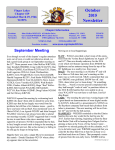

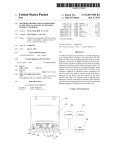

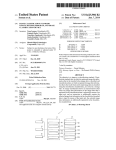
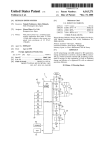
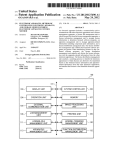
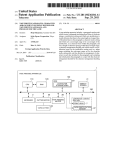
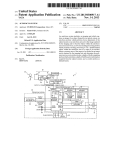

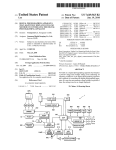
![TR4W User Manual [English Version]](http://vs1.manualzilla.com/store/data/005728234_1-e27c4fea1c6d513d6e0fdc1451ef66f1-150x150.png)
